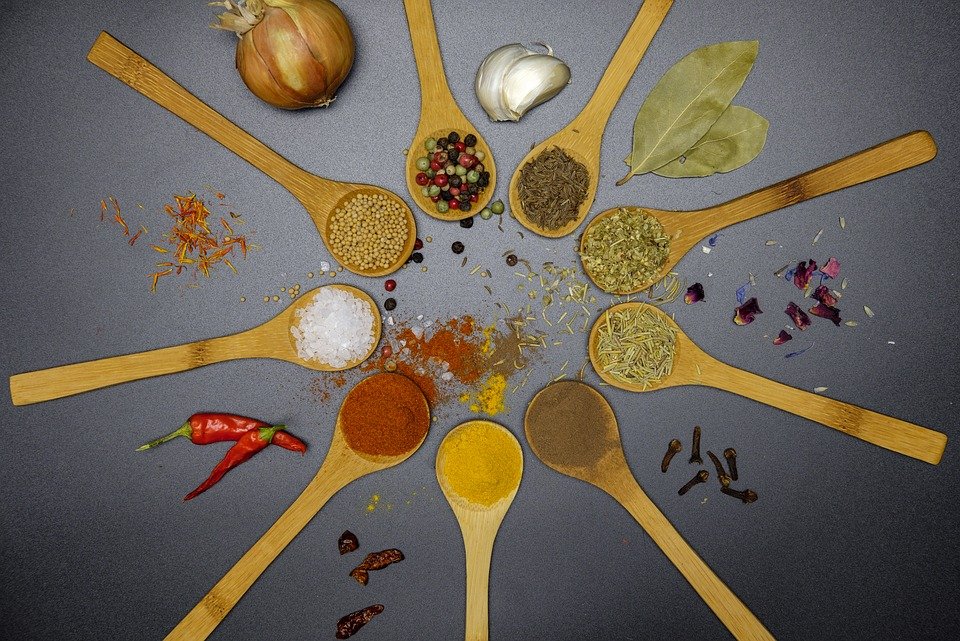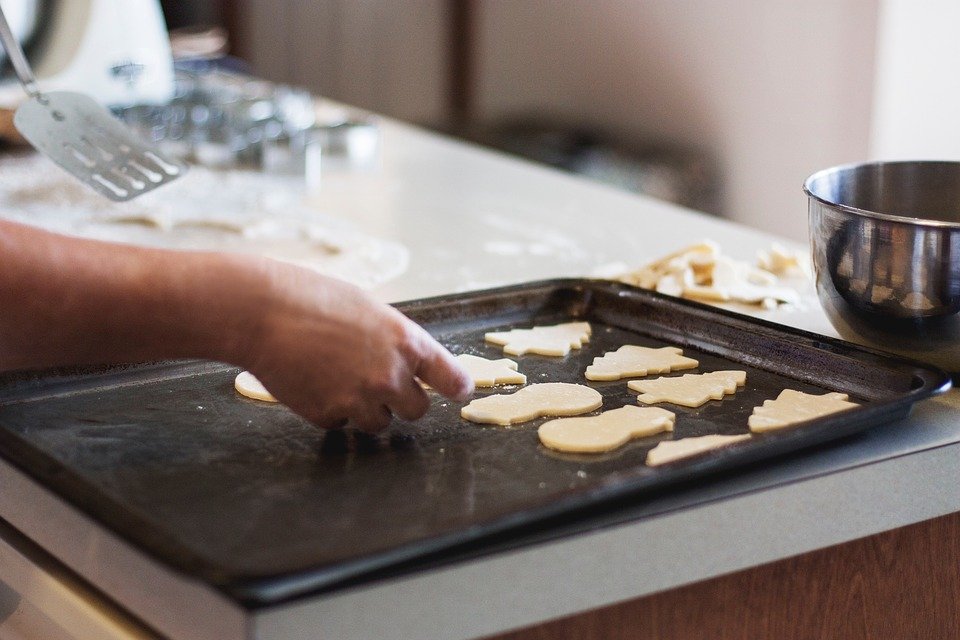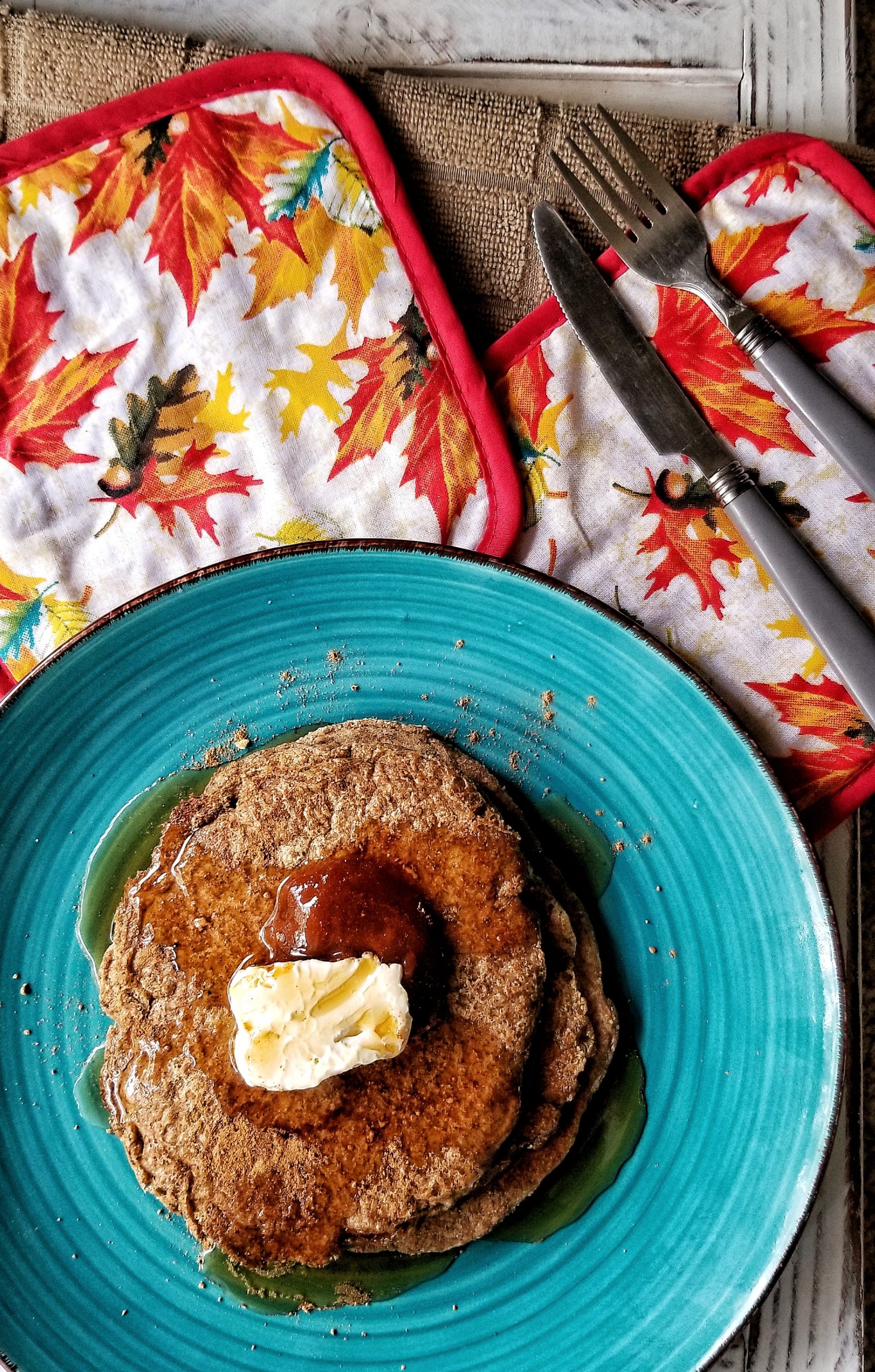Jump to:
- Don’t Use Metal Against Non-Stick Pans
- Don’t Use Dull Knives
- Don’t Increase Heat To Cook Faster
- Don’t Eat Raw Cake Batter
- Don’t Ignore Your Preferences
- Don’t Keep Face Close To Open Oven Door
- Don’t Add Water To Hot Oil
- Don’t Place Hot Cooking Equipment on Heat-Sensitive Countertops
- Don’t Skim Through A Recipe
- Don’t Overcrowd Baking Dish or Pan
- Don’t Be Afraid Of Salt, Sugar, and Fat
Are you the type of home chef that uses a non-stick pan with a metal spatula and cannot understand for the life of you why that pan looks like it has been clawed by an angry cat?
(Clue: there's a reason for it and this is one cooking no-no to avoid).
Or, how hot oil magically splatters and spits when coming into contact with something as cool and collected as water?
But let’s be real: cooking is a real-life learning curve. It can take a long time to just understand the basics. Once upon a time, I was the person who unknowingly committed all of the cooking sins in the kitchen.
After a decade of burns, cuts, and small explosions, I’ve learned a lot about what NOT to do.
As much as we would like to consider cooking to be a “common sense” skill, it’s not. Just like any skill, there will always be room for improvement and discoveries - no matter how long you have been doing it. Besides, we all start from somewhere.
Okay, let’s chop it down to the basics and get into 13 Cooking No-Nos To Avoid while roasting in your newfound confidence in the kitchen.
Don’t Use Metal Against Non-Stick Pans

This was the first cooking no-no I learned to avoid.
Metal spoons, forks, and spatulas will fight with those non-stick pans, even if done carefully. The smooth, coated surface will end up scratched up and useless. The best cooking utensils to use to avoid ruining your non-stick cookware include wooden spoons and silicone spatulas.
Additionally, when it’s time to clean up that non-stick pan, use non-abrasive objects. A sponge, washcloth, or brush will work. A metal scrubber would be a big no-no in this scenario.
So the next time you pull out that non-stick pan and it looks like it has been mauled by an angry bear with a stiletto manicure, you now know why. Be kind to your non-stick pans.
Don’t Use Dull Knives

You would think using dull knives might be a safer option when it comes to protecting those fingertips. But, they can create a very dangerous situation for anyone handling them.
Because you’re using greater force to get the knife to do its job, it can end up slipping and missing your target, making your fingers minced meat. Ouch.
Take it from someone who knows: buy good knives that can do what they’re supposed to do. Or, sharpen them when need be.
Don’t Increase Heat To Cook Faster

Higher cooking temperatures ≠faster cook time. For example, if you set your temperature high for caramelized onions, you’ll end up with burnt bits, rather than achieving a slightly sweet, tender, and soft bunch of onions.
The slow and low cooking process for caramelized onions causes the thermal decomposition of sugar molecules to give the onions that soft and sweet outcome you’re looking for.
However, keep in mind this is always a case-by-case thing. It depends on what you’re cooking and the results you’re anticipating.
The best way to figure all of this to continue experimenting, learning, and discover how heat affects them. Some things can cook quickly, others cannot.
Don’t Eat Raw Cake Batter

We’ve seen this cooking sin done before plenty of times: a lick of a spoon or finger-swipe to a bowl of sweet remains containing raw flour. It’s common but not recommended.
Because it is raw food and has not been treated or cooked to kill germs like Escherichia coli (E. coli), it can make you sick, according to the Centers for Disease Control and Prevention(CDC),
So, how about homemade oat flour? Well, that’s a bit different. Oats are typically treated cooked before processing to make them more shelf-stable. However, it’s probably best to do some diggin’ on the stuff you buy and use.
Don’t Ignore Your Preferences

This is a hard one because, well, you won’t know what you like or don’t like until you’ve experienced lots of different things. My tip? Get familiar with the stuff in your pantry.
For example, I am a huge fan of garlic and smoked paprika. So even if a recipe does not call those two items, if I think they will pair well with the dish, I throw them in.
It’ll take time to boil down your food preferences, but in time you’ll figure out what hits the spot.
Don’t Keep Face Close To Open Oven Door

When you open the oven door, the heat won’t just stay put, it will erupt into the open air. To avoid any hot surprises, make sure you give ample space between your face and that oven door.
Take it from someone who knows. Your eyes and face will appreciate your mindfulness.
Sidenote: you’ll want to use heat-resistant oven gloves or mitt. It can be tempting to use an old towel to handle hot dishes, but they aren’t meant to handle the high heat. They may end up burned, or worse, you can end up burning your hands.
Take caution and use the right equipment.
Don’t Add Water To Hot Oil

Just finished pan-frying something delicious? Cool, let the hot oil hang out in the pan before you even think about dunking it into water.
When hot oil and water interact, you’ll get a dangerous splatter that can leave you with burns. What you can do with the oil instead is to allow it to cool, strain it, then store it. Or, discard it.
Either way, allow the oil to cool before handling post-cooking.
Don’t Place Hot Cooking Equipment on Heat-Sensitive Countertops

If you’re thinking about laying a hot pan or baking sheet on your countertop...STOP! You run the risk of ruining your countertops due to thermal shock. The results can vary from cracking to staining.
Some folks may have had luck with introducing hot stuff to their countertops, but why risk it?
Items you can use to protect your countertops from hot cooking equipment include hot pads, trivets, and potholders.
Don’t Skim Through A Recipe

Get familiar with what you’re getting yourself into (besides the kitchen). Read all of the ingredients, directions, and notes. Prepare yourself with the ingredients you need, along with the cooking equipment you’ll be using.
Skipping an ingredient or swamping out cooking techniques may result in a different result than what the recipe promised. And you can’t fault the recipe for that - especially when the instructions are specific.
Things you want to take note when looking through a recipe:
- Directions
- Ingredients
- Cooking notes
- Cooking technique/s
- Cook time
- Prep time
- Serving size
- Cooking equipment + accessories
Don’t Overcrowd Baking Dish or Pan

...Especially if you’re interested in achieving a golden, crispy exterior in whatever you’re cooking.
If you overcrowd your food while it’s cooking, it will steam, sweat, and sog. For example, when I am baking french fries, I make sure to give each wedge ample space to bask under the heat. If need be, use more than one baking sheet.
If the recipe you’re handling prefers a softer exterior, like tofu scramble, well then, overcrowd away!
Don’t Be Afraid Of Salt, Sugar, and Fat

When I was first introduced to a plant-based diet, I eliminated the use of sugar, salt, and fat in my cooking. However, I learned very quickly that when used in moderation, they can bring a dish to life.
It doesn’t have to be an all or nothing sort-of-thing. Those items can be used in small amounts and those small amounts can go a long way. For example, a pinch of sugar can bring down the acidity in a tomato-based dish like chili.
Or, a tablespoon of oil to baked kale chips can add flavor and define its crunchy texture. Similarly to oil, salt brings out more of the natural flavors in the food themselves.
Don’t Guess Measurements

Measurements are important in recipes and they should be followed closely, especially when you’re new in the kitchen.
For example, if a teaspoon of salt is recommended, but you use a tablespoon instead, your dish might be unpalatable and salty as heck. Or, if you triple the amount of baking powder, your sweets may fold and collapse.
Get familiar with the different measurements and use proper measuring tools. Also, a food scale can come in handy for recipes that mention weight instead. Additionally, a food scale is usually more precise than measuring cups and spoons.
Pro-tip: You can find affordable measuring cups and spoons at stores like The Dollar Tree.
Don’t Forget To Take Notes

If you want to get better at cooking, take notes. Jot down your mistakes, changes, and anything you’ve learned. You can go back to your records and replicate what you have done before.
Record taking is crucial when taking your cooking to the next level, especially when you want to create a staple.
You can either record these notes in a journal or online with a blog. I like to do a mix of both. I have a folder of recipes and their notes, and the final results end up online.


 Pumpkin Pie Spice Oat Bran Pancakes
Pumpkin Pie Spice Oat Bran Pancakes
Leave a Reply